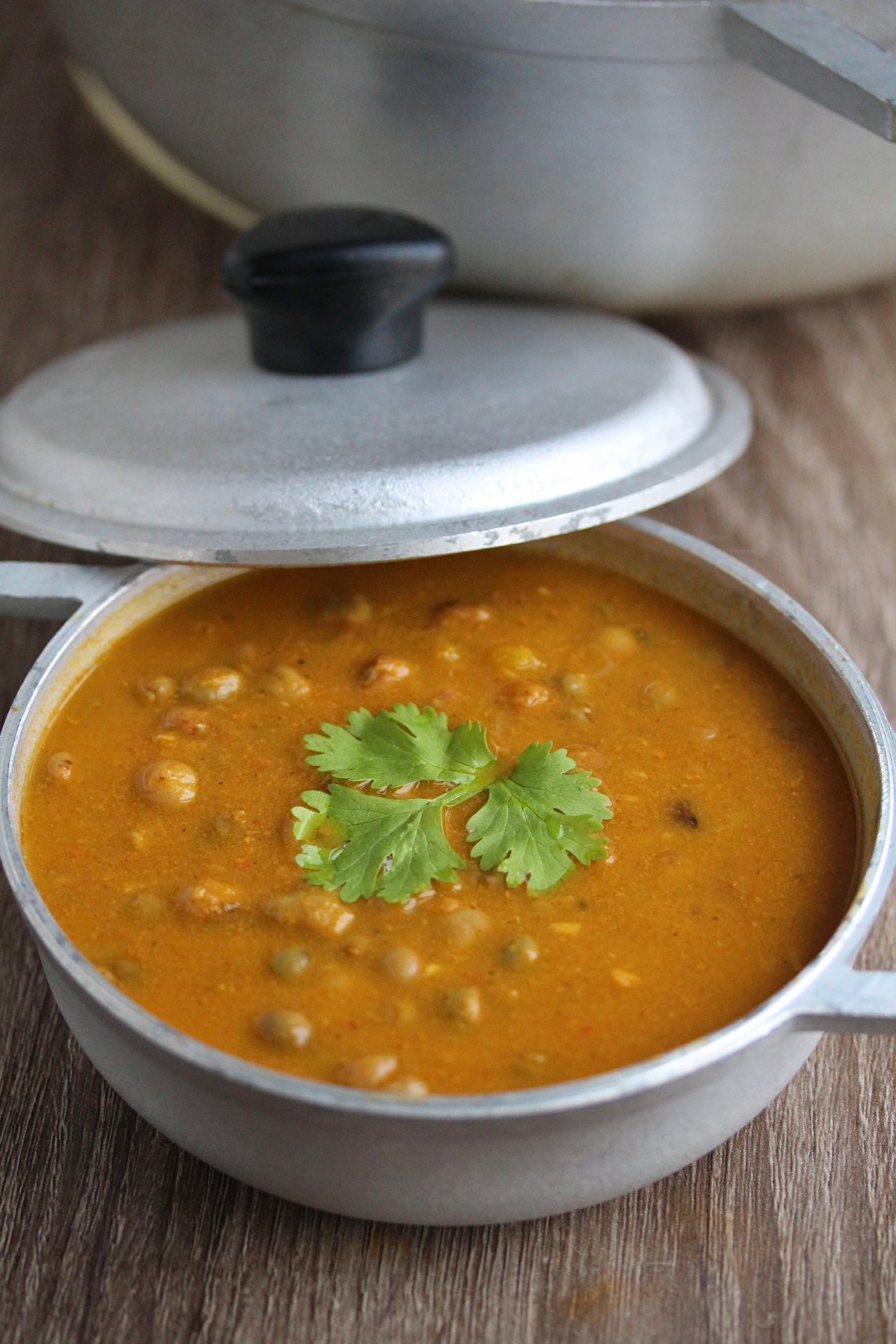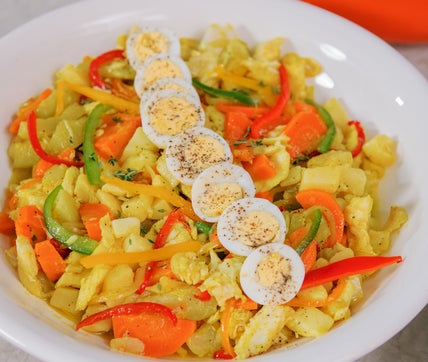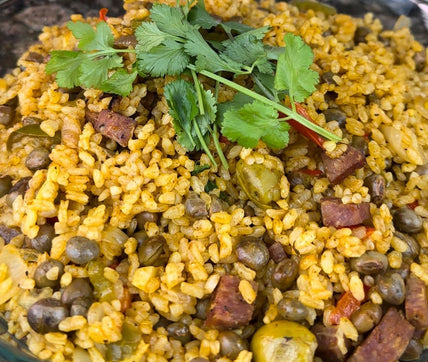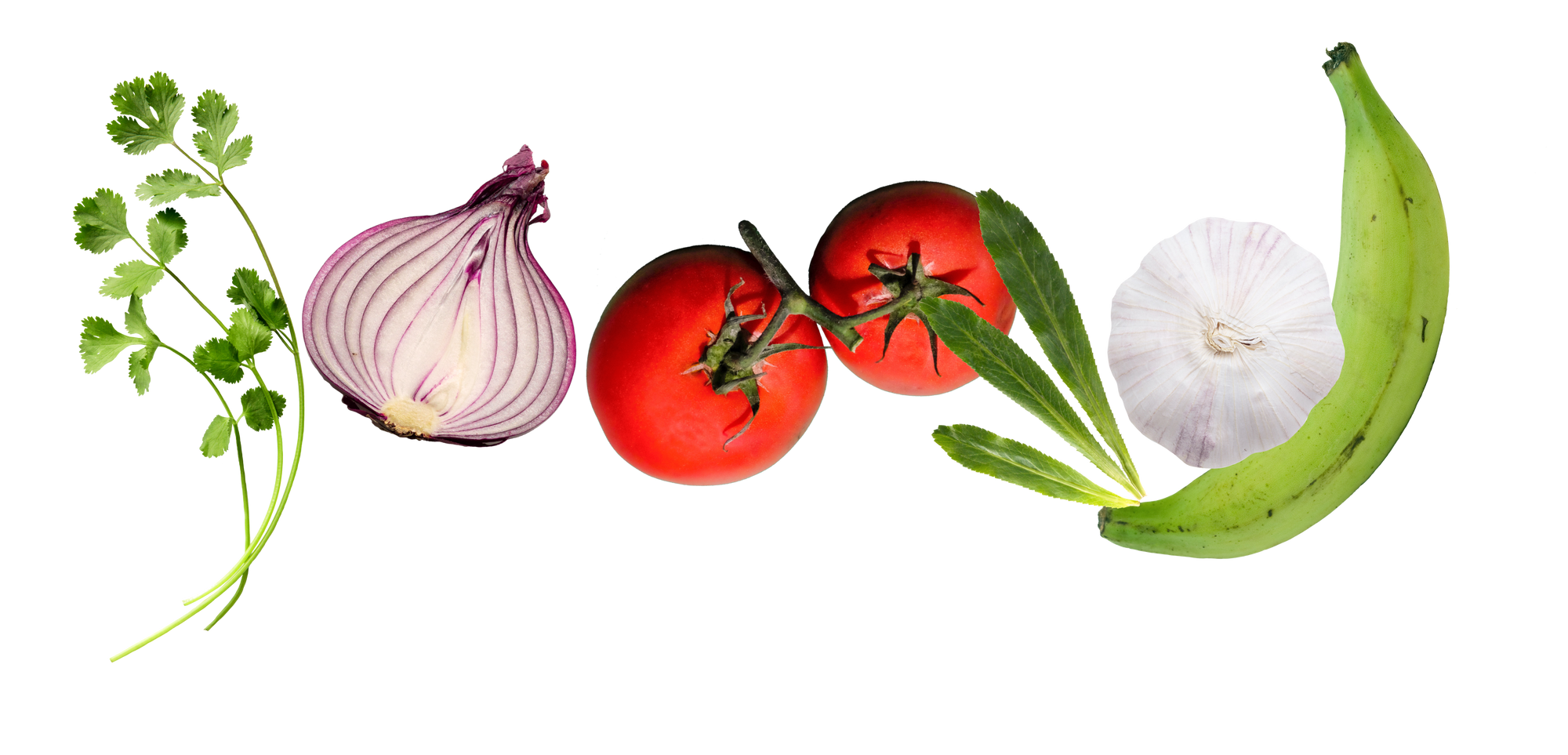
Guandules con Coco
Traditional pigeon pea stewed in a creamy coconut broth.
By: Franchesca Livraghi | @breakthrukitchen
Guandules guisados are a Dominican classic, but Guandules con Coco hits different. The coconut milk makes the stew extra creamy and rich, perfect for scooping up with a bowl of rice and some aguacate. And get ready because we’re making this with fresh homemade coconut milk. It’s worth the extra effort, and it’s the way our ancestors did it.

African influence in Dominican cooking
Our African ancestors brought their knowledge of cooking with coconut to the Caribbean, turning it into a staple ingredient in many traditional dishes. In West African cuisine, coconut milk was often used to add richness to stews and rice dishes like Ghanian red red and Kenyan maharagwe.
This is a tradition that carried over into Dominican cooking influencing dishes like Moro de Guandules con Coco, Pescado con Coco, and Asopao. These are all dishes where coconut milk is the star of the dish and adds depth and creaminess to balance bold, savory flavors. These recipes are a direct link to our African roots, highlighting how their techniques and ingredients shaped the way we cook today.
How to make fresh coconut milk
Making fresh coconut milk is easier than you probably think, and all you need is a brown coconut and 4 cups of water.
Start by finding the softest eye of the coconut and use a screwdriver to poke a hole. Next, drain the coconut water (you can save it for drinking) and crack the shell open using a hammer. Scoop out the white flesh and cut it into small pieces, then add them to a blender with 4 cups of water. Blend on high until smooth, then pour the mixture through a fine strainer.

Use a spoon or your hands to press the pulp until no more liquid comes out, and now you have fresh, homemade coconut milk ready to use for your Guandules con Coco!
Auyama adds flavor and color to this recipe
Auyama adds a natural sweetness and depth of flavor to Guandules con Coco, and also gives the stew a warm, golden color. As it cooks, it softens and blends right in, making the dish richer and more flavorful.
Auyama is also known as kabocha squash, and it has a smooth consistency that naturally adds texture to the stew. If you can’t find it, butternut squash or calabaza make great substitutes with a similar taste and creaminess.

How to thicken the guandules
The secret to thick and creamy Guandules con Coco is blending the cooked vegetables and adding them back into the stew to naturally add body and richness. After everything has simmered and the veggies are nice and soft, scoop out the auyama, bell peppers, onion, and a little bit of pigeon peas and liquid. Blend it all together until smooth, then pour it back into the pot. Let it cook for a few more minutes, and you’ve got thick, flavorful Guandules con Coco without needing any extra ingredients!

Using fresh vs frozen pigeon peas
Fresh pigeon peas have a firmer bite and a slightly earthier flavor, while frozen ones tend to be a little softer with a milder taste. The good news is that frozen peas still absorb all the seasonings and coconut milk, making them just as flavorful once cooked. Whether you go with fresh or frozen, your Guandules con Coco will turn out rich, creamy, and delicious!




